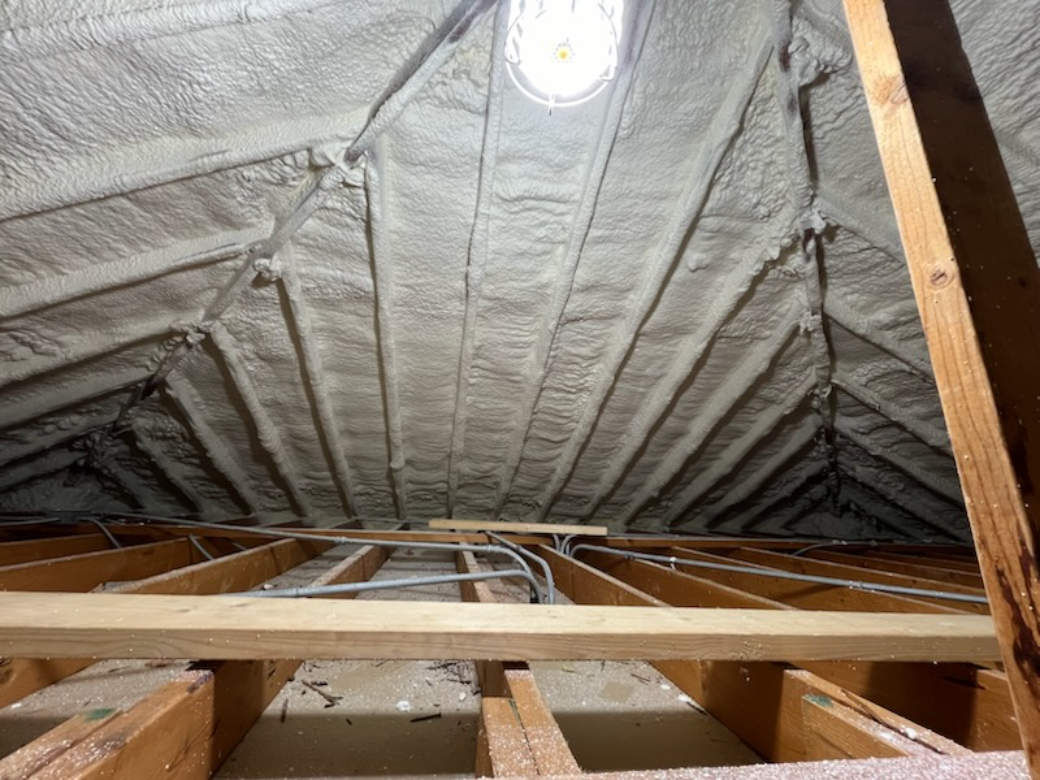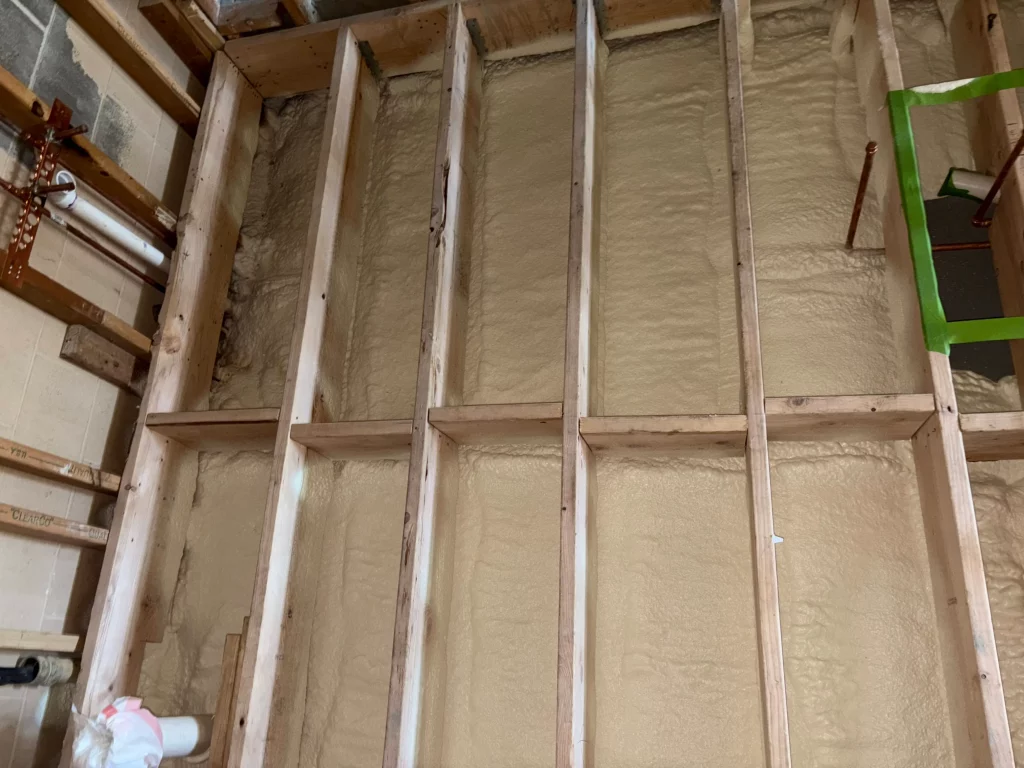
Yes, a lack of proper insulation often leads to cold floors in homes around Naperville, Illinois. In this area, harsh winters with temperatures dropping below freezing make floor cold spots a common complaint. Without adequate insulation, heat escapes through the floor, pulling in chilly air from the ground or basement. This issue stems from older homes or incomplete insulation during construction, leaving residents feeling the chill underfoot even when the thermostat reads comfortable levels.
South Chicago Insulation draws from extensive experience in Chicagoland homes to explain the reasons behind cold floors, signs to watch for, and steps to address them in the local climate, providing practical knowledge based on real-world observations that proves reliable for Naperville residents.
Insulation acts as a barrier that slows heat transfer. In floors, it traps warmth inside the home and blocks cold from seeping up from below. Materials like fiberglass batts or rigid foam boards fill spaces between joists, creating a thermal break. When installed correctly, these layers maintain even temperatures across the floor surface.
In Naperville, where homes sit on slabs or crawl spaces, poor insulation allows ground cold to rise directly. A report from the U.S. Department of Energy notes that uninsulated floors can lose up to 25% of a home’s heat. This loss feels most noticeable on bare feet, turning cozy living rooms into chilly zones during winter months.
Bonus Tip: Test floor temperature differences by walking barefoot in different rooms. Areas that feel colder often point to insulation gaps.
To identify if insulation is the culprit, look for common signs like cold spots under rugs or in specific rooms. If feet feel icy near exterior walls or over unheated spaces like garages, the barrier below likely lacks density. Drafts around baseboards also hint at air leaks combined with thin insulation.
Homes built before the 1980s in Naperville frequently show these signs. Builders back then used minimal materials to meet basic codes, which fall short against today’s energy standards. Residents notice higher utility bills too, as the heating system works harder to compensate for the lost warmth.
Another indicator comes from uneven heating. Thermostats set to 70 degrees might leave floors at 60 degrees or lower. This mismatch forces constant adjustments, adding discomfort and cost.
Naperville experiences cold snaps with average January lows around 17 degrees Fahrenheit. According to data from the National Weather Service, the area sees over 40 days of sub-freezing temperatures each year. These conditions amplify floor cold when insulation fails to hold heat.
Local soil stays frozen for months, conducting chill upward through foundations. Slab-on-grade homes, common in the suburbs, face direct exposure without a buffer. Building on general heat loss patterns, a study by the Illinois Energy Association reports that Midwest homes lose 15-20% more heat through floors than in milder climates.
This regional factor makes insulation essential. Without it, cold floors not only discomfort residents but also strain HVAC systems, leading to premature wear.
Bonus Tip: During heavy snowfalls, check if melting around the foundation creates damp spots indoors. Moisture worsens insulation performance by compressing materials.
Different insulation options suit various home setups in Naperville. Fiberglass offers affordability and ease of installation but settles over time, reducing effectiveness. Spray foam provides a tight seal, expanding to fill gaps, though it costs more upfront.
Rigid foam boards work well for basements, offering high resistance to moisture. Each type carries an R-value, a measure of thermal resistance, with higher numbers indicating better performance.
The table below compares common options based on key factors.
| Insulation Type | R-Value per Inch | Cost per Square Foot | Best For | Drawbacks |
|---|---|---|---|---|
| Fiberglass Batts | 3.1-4.3 | $0.50-$1.00 | Crawl spaces, attics | Can absorb moisture if not sealed |
| Spray Foam | 6.0-7.0 | $1.50-$3.00 | Sealing air leaks | Higher initial expense |
| Rigid Foam Boards | 5.0-6.5 | $0.75-$1.50 | Slab edges, basements | Requires precise cutting |
| Cellulose | 3.2-3.8 | $0.60-$1.20 | Blown-in applications | Settles in humid areas |
This comparison helps select based on budget and home structure. For Naperville’s freeze-thaw cycles, materials resistant to dampness perform best.
Market data from the U.S. Census Bureau shows that 35% of Illinois homes from the 1970s era lack sufficient floor insulation, contributing to widespread cold floor issues.

Evaluate the home’s age and construction type first. Older Naperville properties often need full retrofits, while newer ones might just require top-ups. Check for moisture problems, as wet insulation loses efficiency quickly in the local clay soils.
Budget plays a role too. Basic fiberglass upgrades cost under $2 per square foot installed, but spray foam doubles that. Factor in energy savings; a properly insulated floor cuts heating bills by 10-15%, per Energy Star guidelines.
Assess access points. Crawl spaces allow easier work, but finished basements demand careful planning to avoid disruption. Long-term durability matters in this climate, where materials face repeated wetting and drying.
Consult local building codes. DuPage County requires minimum R-19 for floors in new additions, ensuring compliance avoids future headaches.
Bonus Tip: Hire a professional to perform a blower door test. This reveals exact air leakage points, guiding targeted insulation fixes.
Insulation gaps let cold air infiltrate continuously, overriding thermostat settings. Sealing these spots restores balance.
Rugs add a layer of comfort but don’t address the root cause. They mask symptoms while heat loss continues underneath.
High indoor humidity during winter condenses on cold floors, promoting mold if insulation traps moisture. Use vapor barriers to prevent this.
No, wall insulation targets side heat loss, not floors. Focus efforts on the subfloor or basement for direct impact. Combined upgrades yield better results, but floors demand specific attention.
Quality installations endure 20-30 years, though settling occurs in loose-fill types. Regular inspections every five years catch early degradation from pests or shifts.
DIY works for accessible areas like attics but risks errors in tight spaces. Professionals ensure even coverage and code compliance, avoiding costly voids.
Aim for R-30 or higher in floors to counter local cold. The U.S. Department of Energy recommends this level for zone 5 climates, matching Illinois conditions.
Yes, drafts from inadequate barriers lower indoor temperatures, increasing respiratory irritation from dry heated air. Proper setup maintains steady, healthier environments.
Lack of insulation directly causes cold floors in Naperville by allowing heat to escape and cold to enter. Recognize signs like uneven chill and drafts, then choose suitable materials based on home needs. Consider local weather’s role and weigh factors like cost and access before acting.
Examine your floors closely. Match solutions to your home’s structure and evaluate energy use patterns for lasting comfort.
Take action by assessing current setup and gathering quotes for upgrades. South Chicago Insulation offers guidance at (779) 803-8025 or via email at [email protected]. Explore options that fit specific needs to achieve reliable warmth year-round.